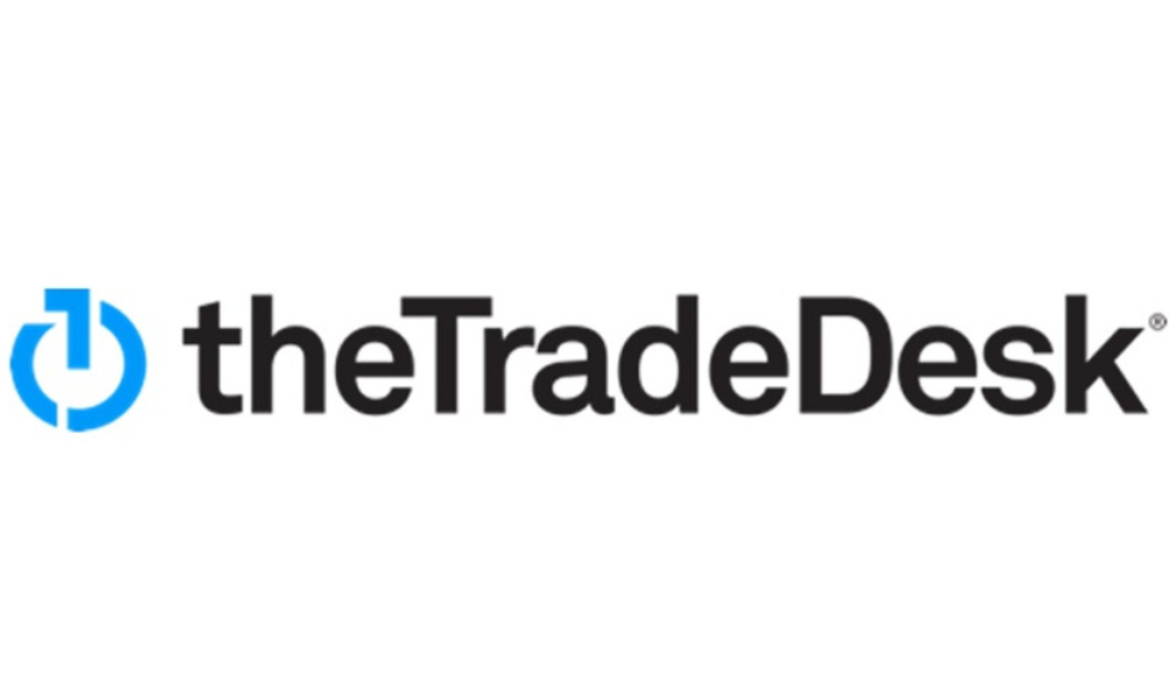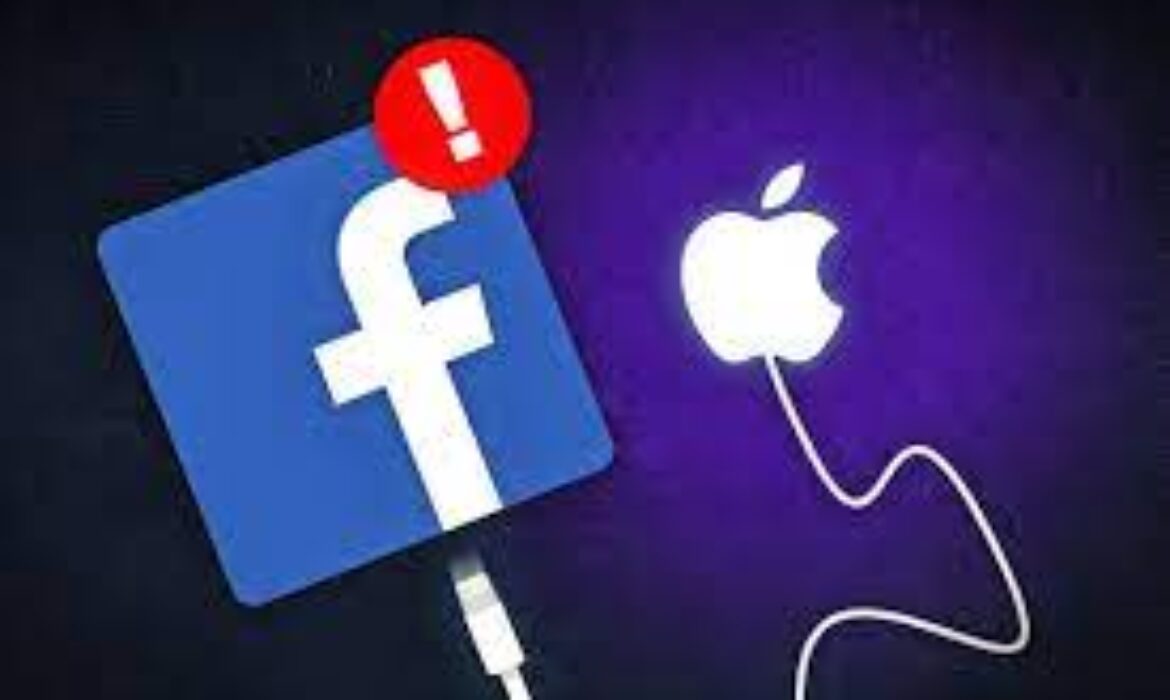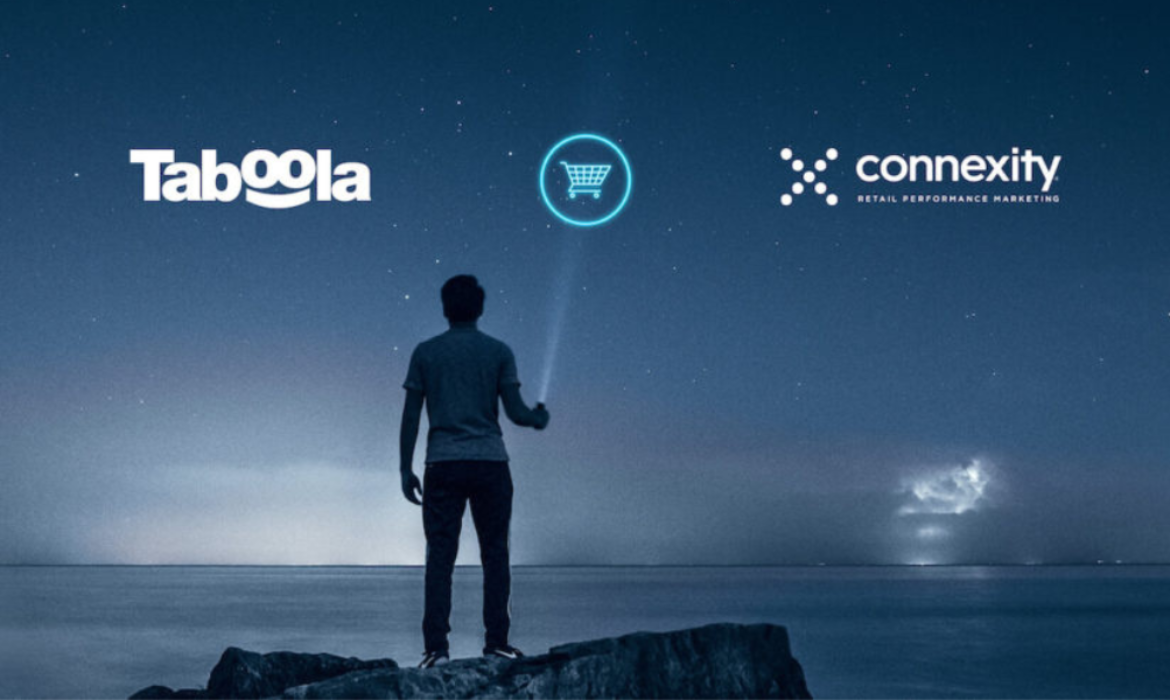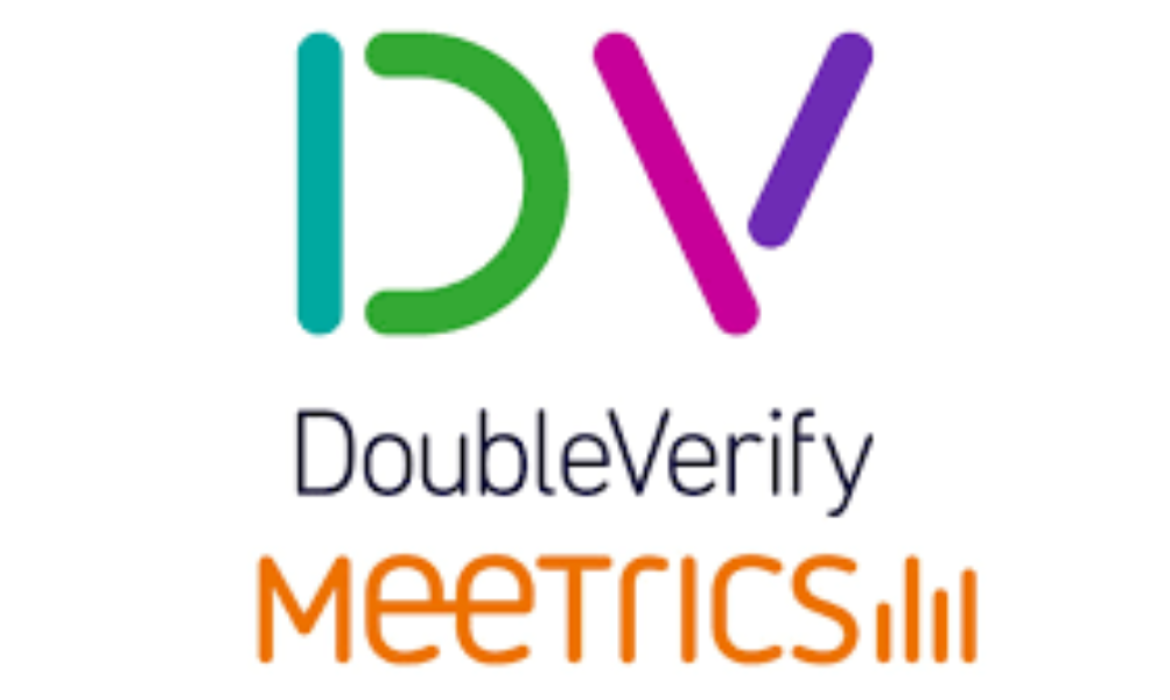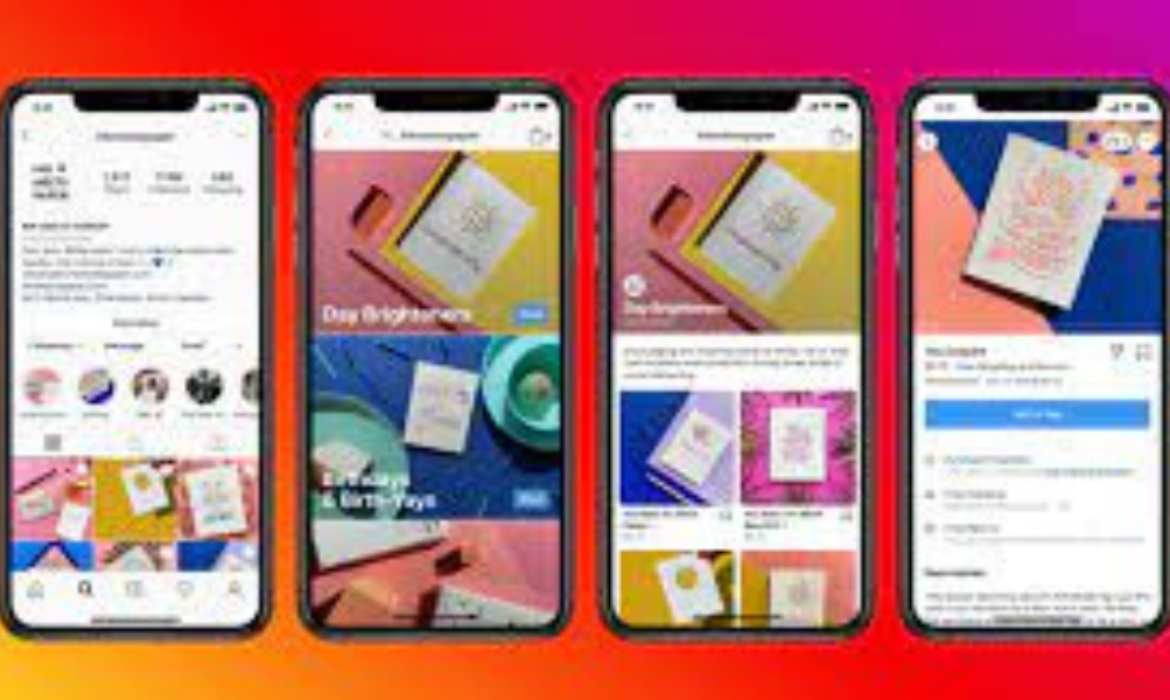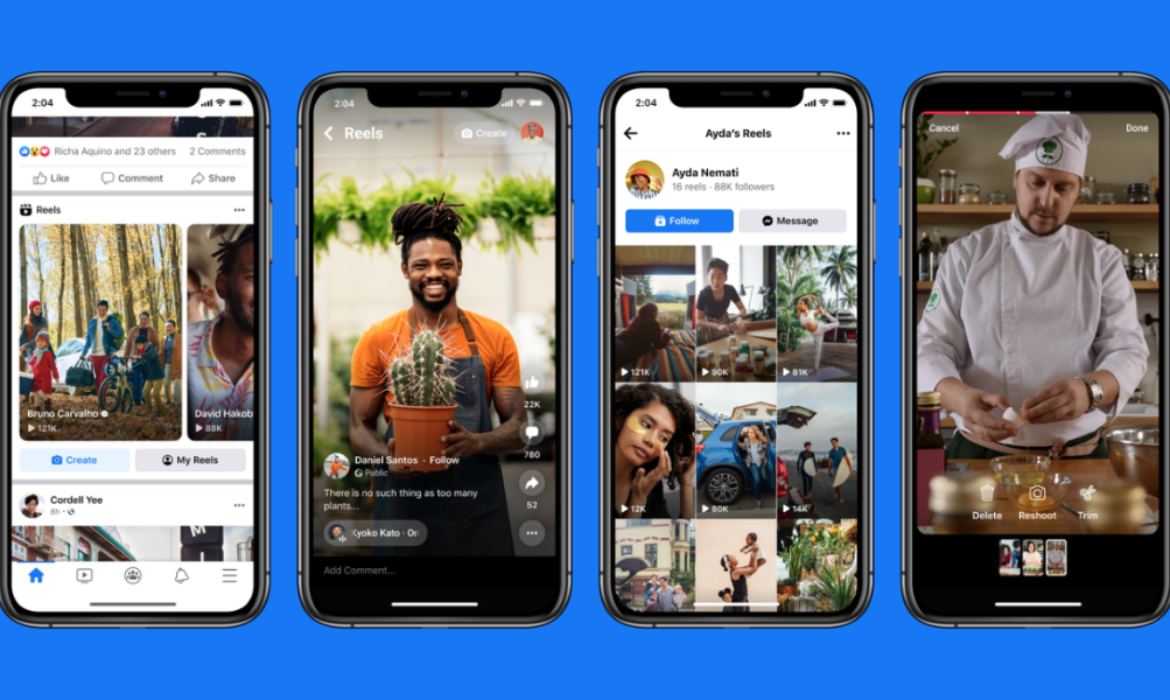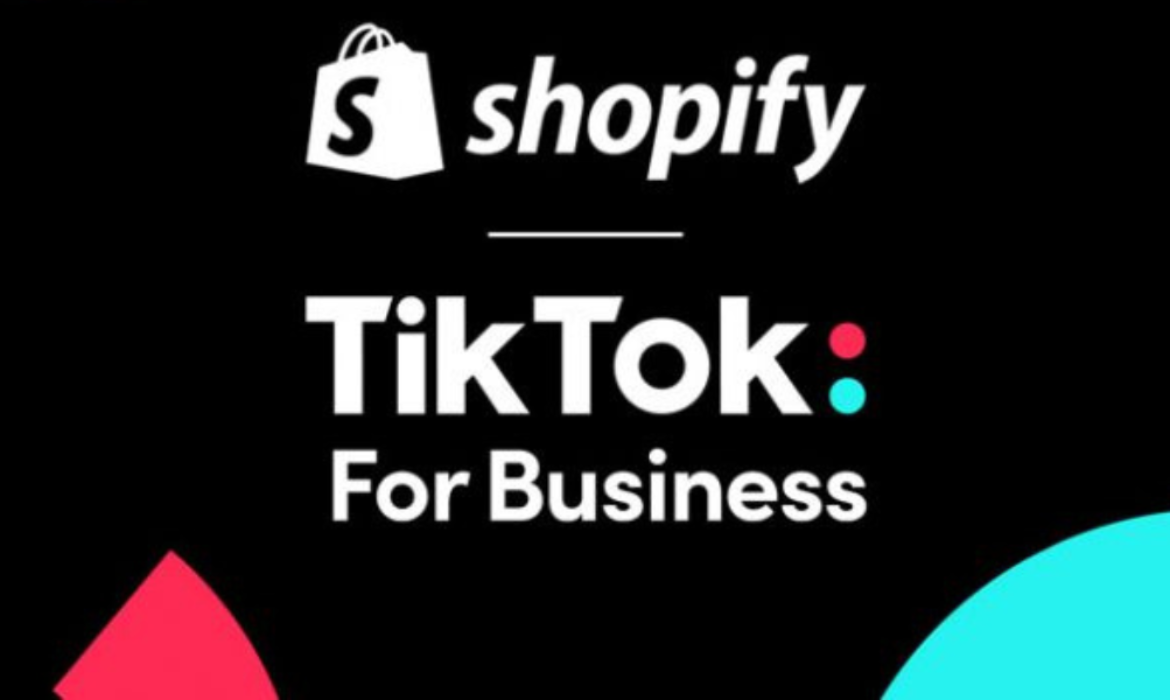Trade Desk Partners With Samsung Ads For Programmatic CTV
The Trade Desk announced a collaboration with Samsung Ads, a platform for advanced TV advertising solutions that can aid Indian marketers to reach millions of engaged viewers all over the open internet. The Trade Desk platform will provide marketers access to Connected TV (CTV) inventory on Samsung Smart TV, offered through its free, ad-supported on-demand (AVOD) streaming service, Samsung TV Plus.
The collaboration will enable marketers to measure their advertisement campaigns efficiently compared to linear TV. The marketers can compare and measure the ad opportunities across the channels on the open internet by applying the same level of data-driven insights on any digital marketing advertising but in a transparent way.
Related Article: All You Need To Know About Connected TV Advertising!
Trade Desk is expanding CTV advertising options to India’s open internet market such as over-the-top (OTT), music streaming, and mobile apps. India’s programmatic-first market is growing rapidly, with a prediction of 74% of total digital ad sales to be programmatic by next year. Prabhvir Sahmey, senior director, Samsung Ads, said,
India is the first market where we are launching a programmatic first strategy. Our collaboration with The Trade Desk is integral to facilitating wide access to our inventory, offering brands the opportunity to extend their reach in a premium, brand-safe environment – the biggest screen in the house.
A report estimated that CTV will reach over 40 million households in India by 2025 from about 7 million today. The growth of Connected TV is phenomenal and the engagement levels are higher compared to smartphones. For marketers, CTV is a brilliant opportunity and the biggest segment for advertising investment.
Therefore, more spending is witnessed on programmatic advertising. Tejinder Gill, general manager, The Trade Desk in India, said,
Indian marketers are increasing their spends on digital advertising and steadily turning to programmatic advertising, which offers real-time measurement and better control over ad frequency. CTV, which is rapidly gaining adoption among consumers, is one of the best platforms in India for programmatic advertising
He also added –
As CTV advertising does not rely on third-party cookies, marketers can also measure and compare the effectiveness of their CTV advertising with other channels on the open internet. We will leverage our global expertise to pioneer CTV advertising on the open internet in India, starting with our collaboration with Samsung Ads
Interesting Read: CTV Advertising To Reach $21B In 2021 In The United States!
Facebook Advertisers Battle Ad Results After Apple’s Privacy Changes
A reporting glitch in Facebook’s ad results on Apple iPhones has created trouble for brands. Apple’s new privacy rules are making it difficult for Facebook advertisers to even conduct basic analysis and send faulty data about the campaigns.
There is inaccuracy for a simple study like understanding whether the person who saw the ad and made the purchase is the same or different.
Facebook has been fixing its ad platform ever since Apple started cracking down on tracking on its iPhones. Last week, Apple reported a bug last week where some advertisers received incomplete information that affected in-app installs, also known as conversions. Apparently, Facebook underreported the downloads and how well the ads worked for the marketers that ran on certain iPhones.
Similar News: Facebook Failed To Detect A Bug In Its Conversion Tool For A Year!
Facebook Advertisers & Data Dilemma
As stated to Adage, Jeff Richards, a paid media consultant who manages digital advertising for multiple brands explains the challenge for brands with an example: A brand recorded 20 conversions on their website and they correlated to the Facebook ad campaign.
However, Facebook Ads Manager reported zero conversions. This means no return on its ad dollars which was opposite to the reality. It was clear that consumers were shopping. A complete mismatch of data!
Facebook had earlier informed the marketers that the flaws in data reporting are fixed and advertisers can see high conversion values. A note obtained by Adage said, “We will be expanding modeled reporting for Website Purchases Conversion Value.”
Similar News: Apple In-app Purchase Policy – Understanding The Pros & Cons
Website Purchases Conversion Value is a system used by Facebook to track the total value of sales on an advertiser’s website after people viewed or clicked on a Facebook ad. This is invaluable data that is being inaccurately reported due to Apple’s privacy changes.
The exact reason Facebook was not able to see all the conversions was because Apple made recent changes to its operating system and implemented new privacy changes which led to less information from devices for developers like Facebook. Facebook’s note further stated,
With this update, statistical modeling will be used to estimate associated values of additional modeled conversions where events cannot be observed directly (for example, where conversion data may be partial or missing due to data transmission limitations)
As a result, you may see an increase in reported conversion values and other associated metrics like This update should help our bidding system learn from more representative data, which should then lead to more efficient performance
What’s The Way Out For Facebook Advertisers?
In order to fix this, Facebook is constantly communicating with the advertisers and helping them navigate through the uncertainty, and working on new ad measurement programs using “privacy-enhancing technologies.” Facebook’s fix of using statistical modeling is a ray of hope for many brands to regain brand visibility.
The measurement data is important for brands as it will help them to decide which campaigns to invest in and which to pause.
This is a highly crucial situation for Facebook and needs to find new ways to measure ads on iPhones as every single conversion matters. At the same time, Apple and Facebook should resolve their business differences for the betterment of all the parties involved.
Also Read: You Can Now Charge For Tweets With Twitter’s New ‘Super Follows’
Apple Will Now Ask Permission Before Showing Its Own Targeted Ads
iOS 15 users must have received prompts from the Apple App Store asking permission to serve ‘Personalized Ads’ which was earlier enabled by default.
So, what does Apple’s Personalized Ads Feature mean?
Personalized ads are Apple’s way to serve relevant ads in the App Store and Apple News based on what you read, search, and purchase on Apple devices.
Apple rolling out the new prompt to ask permission is a big deal but there is a catch.
The company used to earlier collect information by default and users had to navigate multiple levels in the settings to disable it which is contradicting Apple’s privacy-first image. So, users using iOs14 and older versions still have the personalized ads feature enabled by default.
Similar News: Apple In-app Purchase Policy – Understanding The Pros & Cons
How Does The New Consent Prompt Work?
If you are running the recent iOs15 beta, Apple’s Ad Targeting or Personalized Ads appears as a pop-up notification when you open the App Store. In the pop-up, Apple explains the ads will help you discover relevant apps, products, and services.

Image Credit: Verge
With privacy-first priority, Apple required other developers to seek users’ permission from the users with App Tracking Transparency (ATT). Apparently, Apple is now showing that they are also treating itself the same as other developers.
Similar News: Explained: Why Facebook thinks Apple’s iOS 14 privacy push will have a severe impact on business
But, Why Make This Move Now?
The fact that it was on by default led to Antitrust scrutiny especially when it has limited third-party ad networks with controversial ATT policy but did not follow a similar system to ask permission for its first-party advertising.
As pointed out by Verge rightly, Apple’s language choice is also worth examining – developers are expected to ask a user for consent to be tracked whereas Apple refers to what it is doing as ‘personalization.’
Apple’s rule for other developers: you have to ask users if they want to be “tracked” for ad targeting
But Apple’s own ad tracking is “personalization,” which sounds much less nefarious https://t.co/hsAQuT8zYb
— Alex Heath (@alexeheath) September 2, 2021
This new change brings Apple’s ad policy in line with what third-party developers were required to as a part of the App Tracking Transparency. This can be viewed as a tiny concession on Apple’s part in response to the current antitrust scrutiny in France. According to the complaint against Apple, the users were “insufficiently informed about the use of processing of its personal data” within its own app for ad targeting.
With this small step of ad-tracking pop-up, Apple is conveying “that they are trying to play fair”.
Similar News: Australian Watchdog to Scrutinize Apple And Google App Store Practices
What Is The Final Score?
For iOS14, no permission is required to run personalized ads.
For iOS 15, Apple plans to make a request.
Other developers will have to take the consent and adhere to the law and Apple platform rules with the only question left, will these multiple consent dialog boxes make the user experience distressing?
Also Read: You Can Now Charge For Tweets With Twitter’s New ‘Super Follows’
Taboola Acquires Connexity, A Global Leader In E-Commerce Media
Taboola, the content recommendation company, announced it has completed the acquisition of Connexity. The total consideration of the transaction is $800 million consisting of approximately $590 million in cash and $210 million in Taboola stock.
Connexity is one of the largest independent e-Commerce media platforms in the open web, and the acquisition brings 1,600 direct merchants, and 6,000 publishers including Walmart, Wayfair, Skechers, Macy’s, eBay to Taboola. The acquisition will enable merchants and advertisers to reach new clients through Taboola on the open web and an alternative to the industry’s walled gardens. Adam Singolda, CEO and founder of Taboola, said,
Ecommerce is the future of the open web, consumers will be buying outside of Amazon, on publishers’ sites next to trusted editorial content a lot more than they are today. Amazon has millions of merchants, but merchants mainly have Amazon. That changes today. Combining Taboola and Connexity’s technologies is one step forward in creating an alternative to walled gardens
Similar News: Taboola And Double Verify Partners For Brand Safety
Taboola and Connexity are uniquely positioned to drive growth and diversify their revenue mix as well as helping merchants and advertisers- all capitalizing on the significant growth potential. Adam Singolda explained,
At a time when, according to eMarketer, over 60% of U.S. publishers are turning to e-commerce as a top revenue source, I believe every publisher is going to develop an e-commerce strategy. With Taboola and Connexity, publishers will get instant access to an innovative technology connecting readers with products, which capitalizes on where consumers spend a large part of their day–reading trusted news online
Another benefit to merchants and advertisers would be Taboola offering Connexity e-commerce solutions across the former’s vast network of more than 9,000 digital properties that reach 500 million daily active users. With Connexity’s offering integrated with Taboola’s network, publishers will have a new way to drive revenues, It will scale up customer acquisition by placing products on the stories that consumers are reading.
Similar News: Advertising On Taboola: An Efficient Tool For Advertisers
Connexity Solutions For Publishers And Merchants
Merchant Solution:
–Publisher Network: Connexity core technology powers customer acquisition for merchants like Walmart, Skechers, or Michael Kors on the open web via its extensive publishers’ network and custom-built search platform integrations. Connexity enables more than 750 million product offerings on its shopping intent network, driving more than 1 million monthly transactions for its advertisers.
–Social Influencers: Merchants can reach out to social influencers. Brands like Forever 21, and Wayfair leverage this opportunity to drive customer engagement when social influencers promote their products on their social media post.
Publisher Solution:
– Shopping Section: Connexity allows publishers to build their own shopping section using contextual signals. Brands like CNET and Brand Reviews are using this offering to build their own customized eCommerce section and connect buyers to the products they love.
– Commerce Content Platform: This enables publishers to integrate their products automatically into their editorial content, which will give the readers an opportunity to instantly buy products based on the article they are reading. Publishers including Condé Nast, Hello! Magazine, and News Corp Australia to name a few, are scaling their e-commerce business.
Recent acquisition deals also signal the maturation of ad tech with the rapid public listing of companies and using the resulting funds to grow in an inorganic way.
Double Verify Acquires EMEA based Meetrics, Expands Globally
Double Verify (DV), a leading software platform for digital media measurement, data, and analytics, acquired Meetrics, headquartered in Berlin. The deal will help DV to expand its presence in EMEA after going public in early 2021. Financial terms of the all-cash-transaction are not disclosed but it is expected to close in the third quarter of 2021.
Meetrics was founded in 2008 and has since raised $.1.3 million, as per Crunchbase. It provides ad verification solutions in Europe, Middle East, and Africa (EMEA). The ad tech company has measurement partnerships with the wall gardens of Google and Facebook. The European footprint clientele includes media houses like ITV and Le Monde, publisher Marie Claire was the main attraction for Double Verify to bolster its international growth. Other clients are GM, Carrefour, and L’Oréal.
Another distinctive point that proved lucrative is – Meetrics is the first European company to get Media Rating Council accreditation for in-app viewability measurement for video and display. In 2017, it also received MRC accreditation.
Meetrics’s acquisition marks Double Verify’s first transaction after the multi-billion dollar IPO, which is the biggest in adtech in recent times vaulting the company at more than $5billion. This is the company’s first step towards global expansion and will be eyeing more M&A opportunities to accelerate growth globally.
As reported by Adexchanger, Double Verify CEO Mark Zagorski stated,
“We’re obviously using some of the proceeds of the IPO to drive growth. This is why we did that, so we can more rapidly scale in markets around the world and not have to wait to hire additional resources or build client relationships – we can actually go in and accelerate that using capital.”
M & A In Ad Tech Is Growing
There is a swarm of M&As in ad tech that includes a notable example of Integral Ad Science’s recent acquisition of sell-side CTV ad server and analytics company Publica for $220 million. This shows ad tech companies are more interested in M&A space to pursue inorganic growth now that they are under the eye of the public markets.
Meetrics has more than 80 customers across 23 countries in Europe. This acquisition gives Double Verify a competitive edge. Mark Zagorski explains,
DV’s mission is to make digital advertising stronger, safer and more secure, giving global brands clarity and confidence in their digital investments,
Our strategy in support of this mission is to verify everywhere – across channels, formats, platforms and geographies. The Meetrics transaction fully supports this approach and bolsters our operating footprint in EMEA, adding experienced sales, product, and engineering teams and tenured customer relationships that will continue to help accelerate the growth of our international business
The Meetrics’ sales, product, and engineering teams will continue to operate from offices in EMEA, fortifying and expanding DV commercial operations in the region. Dr. Philipp von Hilgers, Co-founder and Managing Director of Meetrics said,
Integrating Meetrics’ technology and expertise with DV’s global platform will accelerate our efforts to power media quality and performance for leading brands in the region. Through integration with DoubleVerify, we anticipate scaling our solution to better service our customers, while driving even greater positive impact throughout the ecosystem
As reported by Adexchanger, Meetrics will retain its name for a period until 2022 and will operate under DV’s umbrella.
A Potential Deal In Making
The Meetrics acquisition will aid Double Verify to set its footprint in the EMEA region and boosts its business in India as well. Additionally, it can capitalize on Meetrics’ well-built customer relations in the Eastern European market.
Meetrics clientele will also have complete access to Double Verify’s broad product suite and solutions such as contextual targeting. As stated to AdEschanger, DV’s three areas of focus within its M&A strategy: global expansion, bolstering its existing product and technology suite and adding new products, such as new measurement and analytics solutions.
Meetrics technology accessibility will also help Double Verify to drive ad performance apart from verification.
Taboola And Double Verify Partners For Brand Safety
Taboola, the world leader in powering recommendations for the open web, is used by digital properties like websites, devices, and apps announced a partnership with Double Verify on brand safety and suitability targeting controls.
As a result of the announcement, Taboola’s advertiser partners such as performance marketers, media agencies, and brands, will receive access to Double Verify’s standard brand safety and suitability targeting technology, allowing for control over the quality of where their ads are being placed in. Adam Singolda, CEO and founder of Taboola said,
“Many of today’s advertisers require a nuanced approach to brand safety and our reach, coupled with DoubleVerify’s ability to offer different tiers of safety and suitability within different categories, is uniquely valuable,”
He further added,
“With shifts in how consumers view ads online and the growth of ad spend after last year, advertisers deserve the peace of mind that their ads are running alongside the content they prefer. DoubleVerify is an innovator in the realm of advertiser trust, and as we bolster our suite of brand safety offerings, partnering with them was a natural fit.”
How will this partnership benefit the advertising partners?
– The settings can be customized by advertisers based on DV’s oncological expertise and industry-leading brand safety and suitability controls.
– DV’s sophisticated approach to content classification allows advertisers to carefully balance brand reputation, protection, and scale while achieving their marketing objectives across their Taboola campaigns.
-Advertisers can make use of DV’s safety and suitability segments while taking advantage of the variety of outcome-based buying options, including CPC and vCPM, available in the Taboola Ads console.
-DV’s pre-bid brand safety and suitability segments are available directly within the Taboola Ads console when planning and executing campaigns.
Mark Zagorski, CEO of DoubleVerify said,
“DoubleVerify’s brand safety and suitability solution enables brands to align their advertising dollars with suitable content, which improves performance,”
“Extending turnkey access to our solutions across Taboola’s environment will help global brands build confidence in their media placements and achieve a higher rate of contextual content suitability. This, in turn, helps create a stronger digital ecosystem where advertisers are able to support premium publisher inventory while safeguarding brand equity.”
Impact of Delay in Deprecation Of Cookies By Google On Adtech
Google delays the Cookiepocalypse but should not be taken as a time to pause!
Google announced a nearly two-year delay to Chrome’s deprecation of third-party cookies to increase user privacy in its blog post. As the original 2022 deadline approached, it became clear that more time is needed to thoughtfully design privacy-first solutions without sacrificing ad-funded web. In its updated timeline for Privacy Sandbox milestones, Google announced,
- It plans to develop a more rigorous process including extensive testing and deploy the Privacy Sandbox proposals across key areas, like admeasurement, targeting, and fraud detection. The goal is to deploy these by late 2022, scale adoption, and then phase out third-party cookies Chrome over three months in 2023 only after Privacy Sandbox Google has been fully tested and deployed.
- Google plans to conclude the origin trial of Federated Learning of Cohorts (FLoC) and incorporate feedback received in the first implementation in the future testing.
Is this announcement a relief for the adtech industry? Well, it is a much-needed reprieve for publishers, marketers, and the adtech industry. The adtech industry should not pause the move away from cookies but continue to search for third-party cookies alternatives. Marketers must continue first-party-based targeting, contextual advertising, and a transparent, privacy-friendly future.
In this blog, we take a deep dive to learn about first and third-party cookies and how does the delay affects the adtech industry.
What is a Cookie?
In simple terms, it is a packet of data in a form of a small text file that contains user information and activity stored within the browser or within a subfolder in the user’s device.
First and Third Party Cookies Explained
There are two types of cookies.
- First-party cookies are stored directly on the website like individual information. The information is never shared with other parties outside the website.
- Third-party cookies are set by a third-party server (adtech) using a code placed on the web domain. The data collected on third-party cookies are accessible on any website using the third-party server code. An advertiser can track users across the internet and target advertising wherever the user goes. They are mainly used for remarketing by advertisers.
Google and Third Party Cookies.
Why is Google doing away with third-party cookies?
Safari and Firefox had blocked third-party cookies settings and Apple claimed a competitive advantage by positioning itself as a privacy-first tech company. According to Pew Research Center, 72% of Americans worry that most of what they do online and on their cellphone is being tracked by companies and 81% believe the risks outweigh the benefits when it comes to collecting data. Google in the 2020 blog post wrote,
“Users are demanding greater privacy–including transparency, choice, and control over how their data is used–and it’s clear the web ecosystem needs to evolve to meet these increasing demands.”
Therefore, Google planned to phase out 3P cookies eventually to avoid any negative impact on the online advertising business.
Even though Google isn’t the first web browser to block third-party cookies but the biggest. Techadvisor reports that Google Chrome accounts for more than half of web traffic. As Statista reports in 2019, Google Chrome made up more than 56% of the web browser market.

Credit: HubSpot
How does third-party cookies death affect the ad business?
The death of third-party cookies will have a significant but limited impact on the digital ad business as Google moves a step forward for privacy. Google will collect data and use it to target ads. However, it won’t allow cookies to collect data and sell web ads targeted to individual users browsing activities. This means the raw data like clicks and conversions will be available but specific data points used by advertisers for targeting will be lost. Therefore, ad companies will have to find third-party cookie alternatives to target users.
Options For Ad Companies In The Post-Cookiepocolypse World
There are three major options for the companies to show relevant ads and measure the effectiveness of the campaign in the absence of third-party cookies.
- Google is championing technology developed through Privacy Sandbox-a browser-based tracking model. Federated Learning of Cohorts (FLoC) is an internet-based advertising technology where Chrome will track user’s browsing habits across the web and categorize them in various cohorts alongside audiences with similar interests. Advertisers will show ads to cohorts rather than individual users. The tech giant claims to expect its FLoC technology to be at least 95% as effective as cookie-based advertising — but ad-tech players still have concerns.
- Publishers and Brands are building their own models based on first-party data. Large-scale publishers like the New York Times, Vox Media, and others have already launched their own ad targeting systems based on first-party data.
- Some brands from the ad tech industry are developing identity-based tracking similar to cookies. The leading ad tech company Trade Desk has developed a prominent solution Unified ID 2.0 which has received support from ad tech companies and groups.
Why Has Google Decided To Delay The Deprecation Of Third Party Cookies?
The complexities of removing cookies and delay in implementation of its own Privacy Sandbox system that includes FLoC technology resulted in the delay of deprecation of third-party cookies.
Another reason to phase out by the end of 2023, is the regulatory scrutiny from both sides of the Atlantic. The UK Competitions and Markets Authority (CMA) investigation has raised concerns about whether the new cookie-replacing technology, which categorizes users into ‘cohorts’ is giving an unfair advantage to Google over its competitors. The CMA is investigating if this move by Google can result in advertisers shifting budgets into Google Ads. Vinay Goel, Privacy Engineering Director, Chrome, said:
“We plan to continue to work with the web community to create more private approaches to key areas, including ad measurement, delivering relevant ads and content, and fraud detection. Today, Chrome and others have offered more than 30 proposals, and four of those proposals are available in origin trials. For Chrome, specifically, our goal is to have the key technologies deployed by late 2022 for the developer community to start adopting them. Subject to our engagement with the United Kingdom’s Competition and Markets Authority (CMA) and in line with the commitments we have offered, Chrome could then phase out third-party cookies over a three-month period, starting in mid-2023 and ending in late 2023.”
Should Marketers Change Marketing Strategies Over the Delay?
In response to longer timescales, marketers should not get distracted from the larger context of the moment. The industry is gradually transitioning from opaque consumer data collection to privacy-focused and transparent solutions.
It is essential to understand that there is a delay and not a change in direction, hence stay focused to find authenticated solutions in parallel to cookie strategies through 2022. The next two years are crucial as it gives marketers and the adtech industry time and space to test, and iterate solutions to build consumer trust.
Marketers should continue future-proof targeting and measurement strategies, prepare a sustainable approach for a data deprecated future and invest in first-party data solutions to maximize revenue and personalization.
Expert Chime In On The Recent Change
Some expert opinions from across the adtech ecosystem as quoted by Exchange Wire.
- This news appears to have been met with a huge sigh of relief from the advertising industry, as well as Wall St where the share prices of major DSPs and SSPs saw big spikes. – Rob Hall, CEO, Playground XYZ
The ad tech social sphere was immediately alight with commentary, with a lot of people in the industry proclaiming how nice it was to have more time to work on solutions. But I feel they’re all missing the point: we need to depart from the reliance on third-party cookies as soon as possible because consumers have made their position crystal clear: they don’t want to be tracked around the internet. The fact that Google has delayed these changes due to the ad industry not being ready shouldn’t be met with relief. It should be met with a humble acknowledgment that, if you’re still reliant on third-party cookies, you’re increasingly behind the times. This delay isn’t a lucky break. It’s a stay of execution.
We need to re-shape advertising to not be so reliant on following people around the internet and instead use techniques that reach consumers – on their terms. We think the future of advertising is cookie-less and, largely, identity-free. Consumers have already made it clear that this is what they want, not in two or three years’ time, but today. So, yes, you could keep using third-party cookies for a little while longer. But just because you can, doesn’t mean you should.
- The future is still coming – Kevin Joyner, Director of Data Solutions, Croud
Don’t let Google’s announcement lull you into a false sense of security. Google has not paused the GDPR. Safari and Firefox still exist and have the same significant user base. Mobile and therefore iOS isn’t any less important. Digital attribution is still flawed and unreliable on its own. Automation is still leveling the advertising playing field, and so you still need to activate first-party data to continue to compete. All your “cookieless” plans are still needed, and the future is still coming.
Final Words
Privacy is one of the major concerns on the internet for users. Therefore, the need of the hour is to build an infrastructure based on first-party data. The delay in deprecation of third-party cookies will help to build an advertising ecosystem upon which brands, marketers, and publishers can depend. Now, all eyes are on Google who is working on building a privacy-focused advertising platform. Getting right is crucial as the significance of digital marketing is growing and a longer timeline will help to develop multiple solution approaches.
Instagram Rolls Out Ad Feature To The Shops Tab Globally
Synopsis:
- Instagram launches the ad feature in the Shops tab globally
- Users can click on the Instagram Shop Advertisment to browse or view product details or save the product to the personal wishlist.
- This marks the latest update of Facebook’s ongoing commercialization strategy to monetize every segment of its social media empire.
Instagram announced the launch of ads in the Shop tab globally, rolling out in countries where Shop Tab has already been in operation. The aim is to earn more advertising dollars from brands hoping to reach new customers. The global roll-out allows brands to showcase their products to a larger audience who are already in a mood to browse.
This marks Instagram’s latest update in the ever-evolving and booming social commerce space. The photo-sharing app already has adverts sprouting on Reels, Stories, individual feeds, or suggested posts. Instagram Shop is a photo and video sharing app tab that allows users to browse items like clothing and beauty products, and let them buy directly through the app.
In the new feature, advertisements will appear as tiles on the Shop Tab, enabling the user to click on the ad and directly navigate to the product detail page, from where the potential buyers can read up and check additional photographs. The user can also browse other products of the respective brand. If a user does not want to purchase the product immediately then can save the details on a personal wishlist or share them with friends.

Credit: Instagram
Instagram has previously tested Shop ads with a few U.S advertisers like Away, Donny, Boo Oh, Clare paint but now is open to brands globally. As reported by Tech Crunch, these ads will launch with an auction-based model and only appear on mobile as Shops is not available on the desktop.
Facebook Tests ‘ Reels’, Similar To Short-Form Instagram Reels Video
Facebook is running a limited test ‘Facebook Reels’ in the U.S. The new feature is the parent company‘s version of the short-form Instagram Reels video. Facebook Reel will allow Facebook users to create and share short-video content directly within their News Feed or Facebook Groups.
The social media giant is already running a similar test in India, Mexico, and Canada whereas the limited rollout in the U.S is an extension of the test. The test will enable Instagram users to cross-post their reels on Facebook.
Facebook Reels Creation Tools Similar To Instagram
Facebook users in the test group can tap the ‘Create’ button from the reels section in their News Feed and access a standard set of tools similar to those on Instagram including video capture, camera roll import, music selection, and timed text.
Audio options for Facebook Reels include Facebook Music Library, record original music, or using music from others Reels if set ‘public’. Other features comprise many augmented reality effects created by Facebook or third-party, editing tools like a timer for hands-free recording, tools to speed up or slow down a part of audio or video.
Even though ‘most’ of the Instagram reels features will be available on Facebook reels, the Remix feature will be added later. Also, the user interface of Facebook Reels will evolve depending on the feedback to differentiate from Instagram Reels.
Facebook Reels Can Be Shared To All
After the creation of Facebook Reels, users can share it with Friends, specific audiences, or the public. It can also be shared with the members of Facebook Groups who share similar interests.

Credit: Tech Crunch
Users can check their past creations under the ‘My Reels’ option and can browse Reels created by others in the News Feed, Search, or Groups. Shared Facebook or Instagram Reels will be recommended to users based on popularity, interest, and engagement.
Why did Facebook Replicate Reels?
As a justification to the test, the company explained, “nearly half of time spent on the app is watching videos.” On Facebook’s earnings call, CEO Mark Zuckerberg stated that “Reels is growing quickly across all forms of videos and is the largest contributor to engagement growth on Instagram.”
It would be interesting to see whether people will dedicate the same time and effort to create content ‘Reels’ specially for Facebook.
Also Read: Facebook Plans a Privacy-Focused Approach to Rebuilt Its Ad System
TikTok Partners With Shopify In The Middle East
Highlights
- TikTok for Business moves into social commerce with Shopify deal in the Middle East.
- Shopify merchants can now access TikTok for business Ads Manager without leaving the former’s dashboard.
TikTok recently extended a partnership agreement with Shopify to the Middle East after their collaboration last year. The partnership will enable brands to create shoppable video ads and campaigns directly geared towards TikTok’s high engaging community. Brands and advertisements are an integral part of the TikTok experience and customers in this region like to connect with their preferred brands. Shant Oknayan, general manager of global business solutions for TikTok in the Middle East, Africa, Turkey, and Pakistan says,
“We are very excited to announce this partnership with Shopify in the Middle East, giving merchants a unique platform to reach new audiences in an engaging and creative way like nowhere else.”
Neilson’s study states that 88% of TikTok users discover new content that they enjoy while using the app, and 50% discover new products through advertisements posted by a product or brand. To keep up with this, TikTok has taken several steps such as introducing new ad formats as well as achieving brand safety certification. Oknayan further said,
“As we continue to develop our platform to bring businesses of all sizes innovative and fun ways to connect with new customers, as well as get the best out of their campaigns, we are confident this partnership with Shopify is a big step in this direction and the start of a promising future in the e-commerce arena.”
Social commerce has been an emerging channel for merchants to reach out to newer audiences. Through this partnership, TikTok aims to make it easier for Shopify merchants to tap the creativity of the TikTok community and optimize their marketing campaigns. They can also benefit from the core functions of the TikTok For Business Ads Manager integrated into the Shopify dashboard. In simple terms, TikTok’s suite of ads allows to showcase creativity and tell stories legitimately, grow audiences and generate optimal results at a lower cost.
Satish Kanwar, Vice President of Product at Shopify expressing optimism said,
“TikTok is one of the world’s fastest-growing entertainment platforms with over 100 million highly engaged users in the US alone. The TikTok channel means Shopify merchants—even those without a strong TikTok following of their own yet—can connect with these new audiences using content that feels authentic and genuine to the TikTok experience.”
Some key points of the partnership include:
Seamless and Streamlines operation
Shopify Merchants can set up an account and payment options seamlessly as well as easily track conversions by installing TikTok Pixel.
One-Stop-Shop for all
Merchants can easily create and optimize campaigns, target audiences, and track performance all under one go
Testing New Commercial Features:
TikTok will also start testing new commercial features that will make it easy for users to discover Shopify merchants in the Middle East and shop their products within the app.

